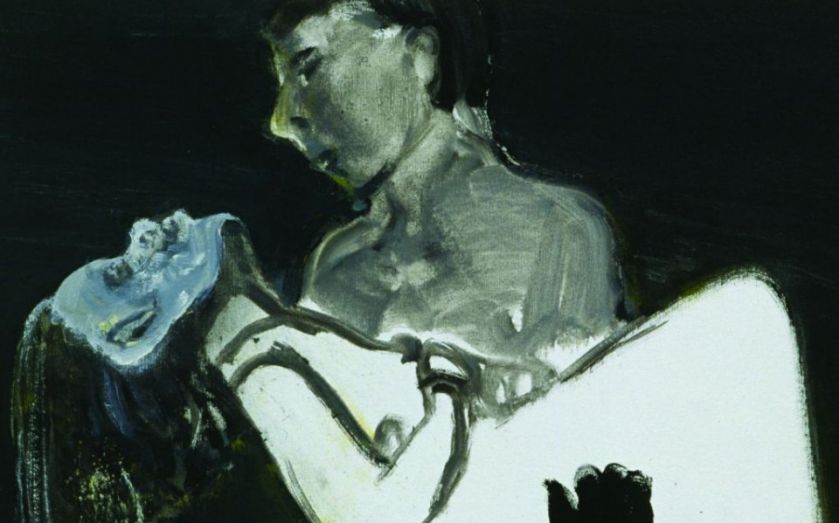Art review: Marlene Dumas at Tate Modern

Tate Modern | ★★★★★
Working from photographs, South African figurative painter Marlene Dumas doesn’t represent life, she gives it. Indeed, it’s tempting to see her paintbrush as a defibrillator, jolting dead images to life. But no-one is being raised here; she doesn’t resuscitate her subjects so much as give them an afterlife, investing the long dead – and the living – with the power to haunt.
Children aren’t exempt from the clinical, mortuary light. Helena, a portrait of her young daughter, towers over us, her purposeful gaze suggesting a wisdom beyond her – and our – years. The faces she depicts are often flawed in disquieting ways, and often they are blank. Vast moonscapes of white canvas pass for cheeks, heads and skulls in paintings whose emptiness echoes back at us in a chilly monotone. It seems the closer we get, the less we see – perhaps because there’s nothing there.
Dumas likes to deflect academic over-analysis. She’s said her childhood in Apartheid South Africa means critics too readily read politics into her work. But politics are in the foreground whether she likes it or not. And foreground is literally all there is in her extreme close-up portraits. With no background, and no contextualising reference point, we are forced into a pure encounter with the subjects themselves.
Such a compositional decision has political ramifications – by showing faces and the faces only, subjects are removed from the societies and cultures in which concepts like black, white, male and female have meaning. It’s a startlingly effective technique.
This is a long exhibition and the tone is unrelentingly maudlin. But Dumas gives us an undulating darkness that’s a pleasure to drift through. And the splashes of colour, when they do arrive, radiate warmth. The Image as Burden – Dumas’ first institutional show in Britain – confidently fills its 14 rooms and cements her status as a great of modern painting.